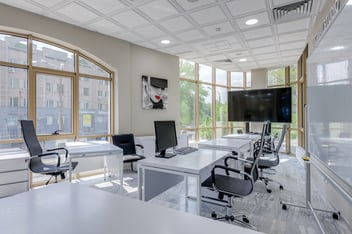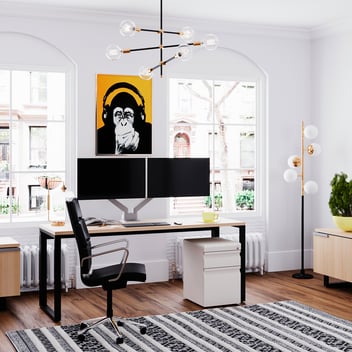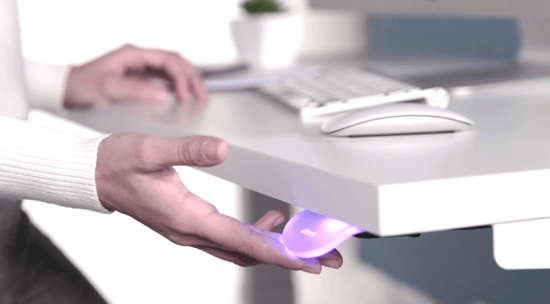Screens Are Causing You Eye Strain —Here’s What You Can Do
Take a moment and think about your workday.
How many hours do you spend looking at a screen—computer, phone, tablet? For most of us, it’s a lot. And as the hours stack up, so does something we’re only starting to understand truly: digital eye strain.
Also known as Computer Vision Syndrome, it’s not just an annoyance; it’s a growing concern across professions. Addressing it isn’t just about comfort—it’s about keeping people productive and well.
So, What Exactly Is Digital Eye Strain?
In simple terms, it’s the collection of eye and vision problems that show up after long periods of screen use. We’ve all felt some of it:
- Eyes that sting or water
- Blurry or doubled-up vision
- That dull, nagging headache by late afternoon
- Tension creeping into the neck and shoulders
- A brain that just can’t seem to focus
Research shows a surprising portion of the workforce deals with these issues daily. It’s not just about how we see—it affects how we work and feel.*
What’s Behind All This Strain?
The causes are surprisingly everyday:
- Too Much Screen Time: Eyes get tired just like any other muscle when overworked.
- Bad Lighting: Whether it’s glare or dimness, poor lighting makes the eyes work overtime.
This can easily be fixed, you can start by reading: Why You Need To Pay Special Attention To Office Lighting
- Awkward Screen Setups: Monitors that are too close or too high force the eyes into constant readjustment.
- Not Enough Blinking: Funny but true—when we focus on screens, we blink less, which dries out our eyes.
Practical Ways to Help Your Eyes
The good news? Small changes can make a big difference. You can try:
Try the 20-20-20 Rule
Every 20 minutes, glance at something 20 feet away for 20 seconds. It sounds almost too simple, but it gives eye muscles a much-needed break.
Set Up Your Workspace Smarter
- Keep screens about 20-28 inches away and just below eye level.
- Adjust lighting to reduce glare without plunging the room into shadows.
- Sit in a chair that keeps your posture aligned—you’ll save your eyes and your back.
Tweak Your Screens
- Match brightness to the room.
- Increase text size to reduce eye strain.
- Consider warmer color tones to dial down harsh blue light.
Don’t Forget to Take Breaks
Short pauses to rest your eyes and move around benefit your whole body, not just your vision.
What Employers Can Do
Companies have an important role to play here: Providing ergonomic chairs, height-adjustable desks, and monitor stands goes a long way. Encouraging people to take quick breaks isn’t just nice—it helps reduce eye strain, mistakes, and burnout.
And could be offering vision benefits that include eye exams? That’s a practical investment in the health of the team.
Why This Matters
Digital eye strain isn’t just “part of the job” anymore. It’s a real challenge—but one that’s manageable when we pay attention. By understanding the problem and making a few smart adjustments, we can create work environments that are healthier and more productive.
Curious how to upgrade your workspace for better eye health?
Check out Gebesa’s ergonomic solutions, such as monitor arms and more, designed with well-being in mind.





.webp?width=352&name=credenza-para-oficina-minimalista%20(3).webp)
